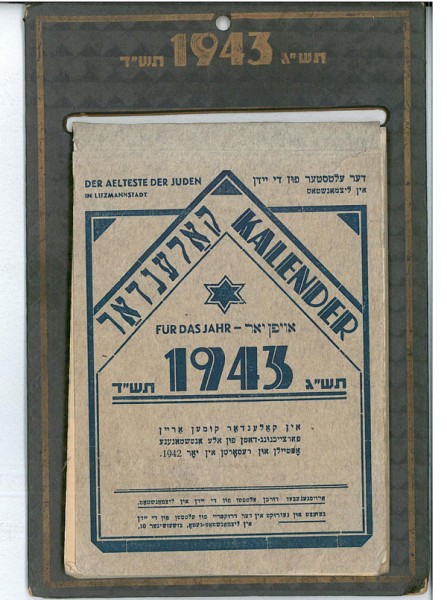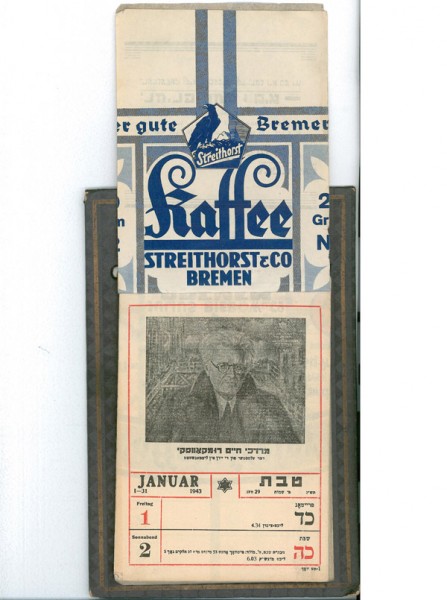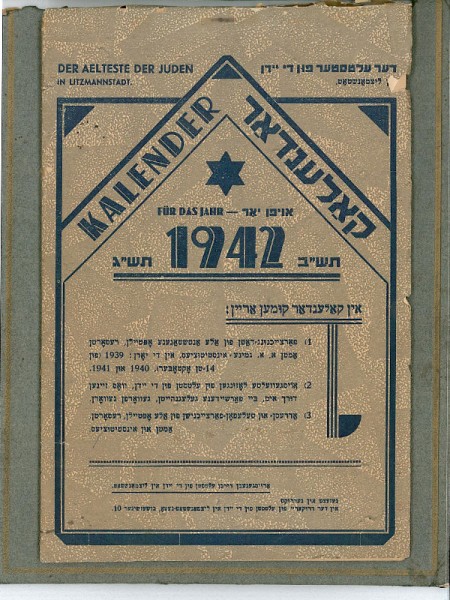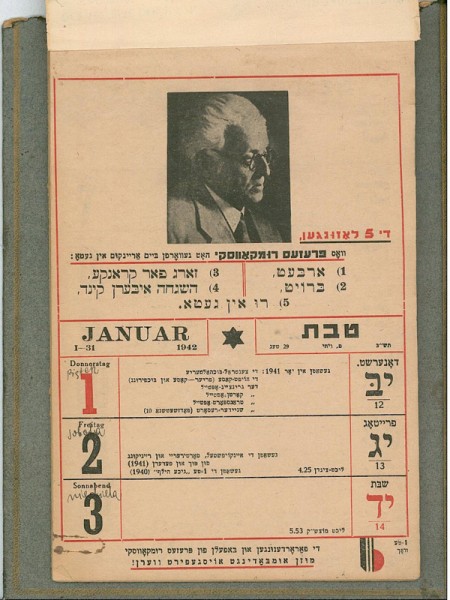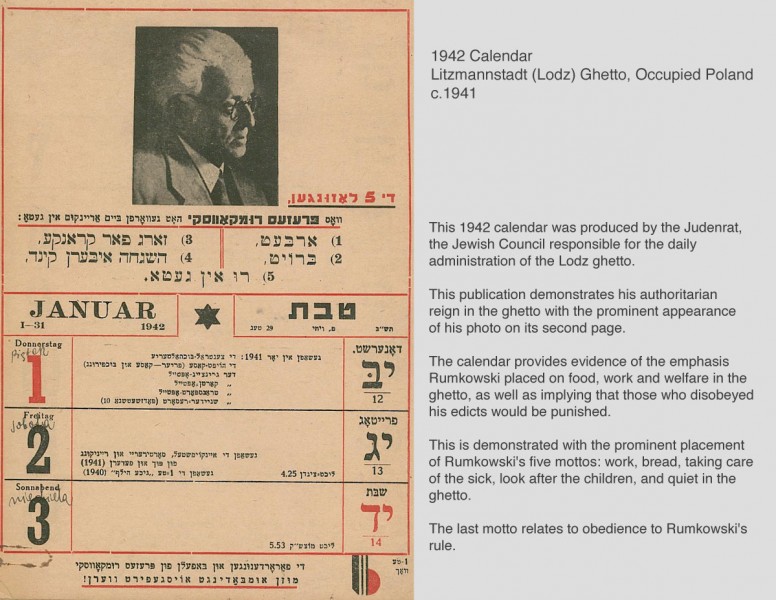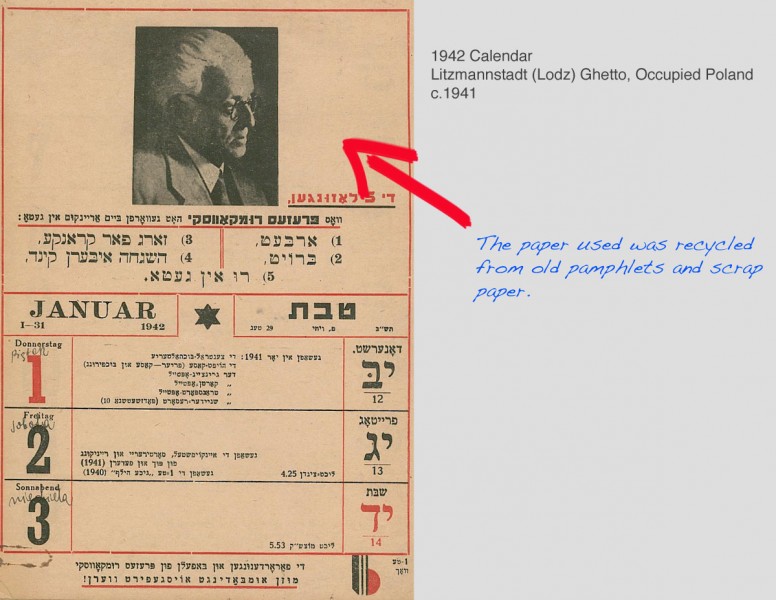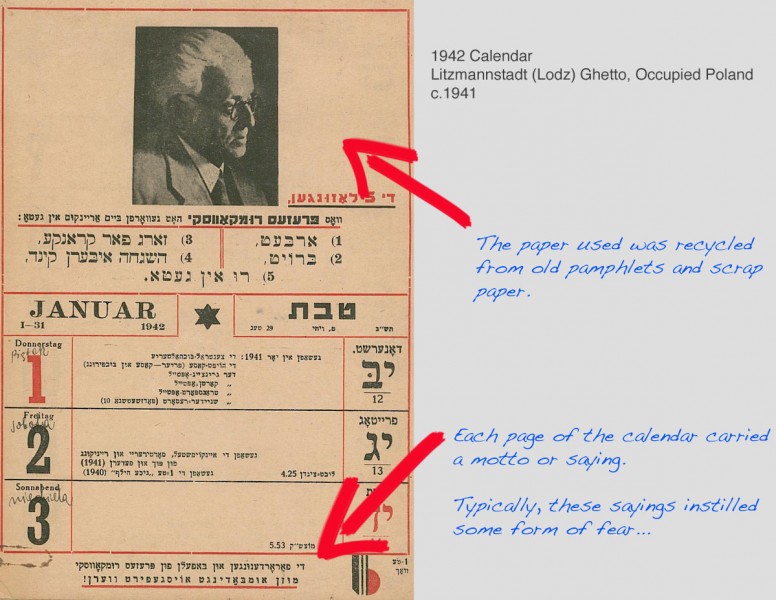Story:
Lodz Ghetto calendar
These calendars were produced by the Judenrat, the Jewish Council responsible for the daily administration of the Lodz ghetto. Mordechai Chaim Rumkowski was the Elder of the Jews in the ghetto, and the 1942 publication demonstrates his authoritarian reign in the ghetto with the prominent appearance of his photo on its second page. The calendar provides evidence of the emphasis Rumkowski placed on food, work and welfare in the ghetto, as well as implying that those who disobeyed his edicts would be punished. This is demonstrated with the prominent placement of Rumkowski’s five mottos: work, bread, taking care of the sick, look after the children, and quiet in the ghetto. The last motto relates to obedience to Rumkowski’s rule.
The calendars include quotes from Rumkowski throughout, such as “for the lazy there is no place in the ghetto” and highlights significant dates related to his achievements as leader of the ghetto, such as the anniversary of when particular departments were established. This document also highlights the Judenrat’s attempt to replicate normal life in the ghetto.
1942 was an important year for the Lodz ghetto. In the first seven months of the year 13,000 inhabitants died of starvation, disease and overwork, in comparison with 11,500 in all of 1941. Between January and May the first mass deportation of 55,000 Jews were sent to the Chelmno extermination centre, located sixty kilometres from Lodz. In September, 15,859 children, elderly and ill inhabitants were also deported. This event was referred to as the Sperre, one of the most horrific events of the ghettos history. These events represented a turning point in Rumkowski’s reign – where Rumkowski’s fiction of autonomy from the German administration had come to an end, because he was no longer able to protect the population from deportation.
